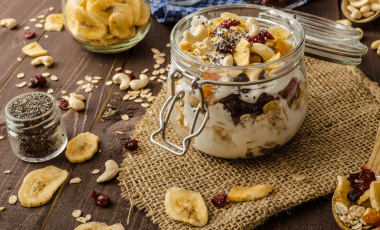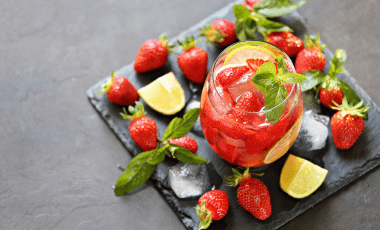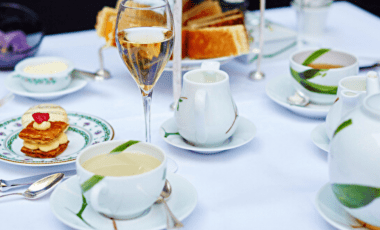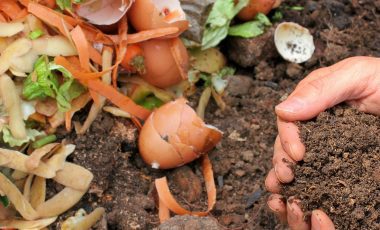Vibrant splashes of colour surrounded by luscious green
Wild plants are a pleasure in themselves, even just to look at. And this plant kingdom’s edible specimens have even more to offer. Wild herbs delight us with new, exciting taste experiences and are also full of healthy nutrients. However, there are a few things to be aware of when collecting the plants. Discover the tips and inspiration you need here, and bring nature’s colourful diversity into your kitchen!
Europe alone is home to over 12,000 different species of plants. Around 1,500 of them are edible for us humans. This is quite a number, but it needs a trained eye. Many edible plants have deceptively similar relatives which would be poisonous if eaten. So, keep your eyes open when collecting! This is the only way to fully enjoy the benefits of wild herbs.
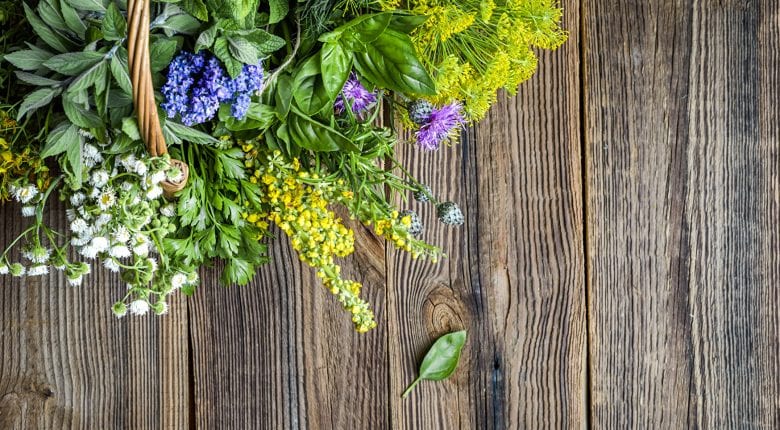
Tip 1: Reliable identification
Before you start collecting, it is best to get yourself a book about edible wild plants with detailed illustrations and descriptions of the individual plant species. This will often specifically refer to the differences between the edible herbs and their poisonous relatives. In this way, you can reliably eliminate any risk of confusion and poisoning. The most important thing to remember is that no matter how slight the uncertainty, it is better to leave the plant where it is than to place a risk to health in your basket.
When starting out, it is best to collect known species with a low risk of confusion. These include dandelions and stinging nettles, for example. When collecting, gradually integrate new species into your repertoire. This will help train your ability to look in detail. Studying the characteristics and detail beforehand helps to ensure reliable identification. Another great opportunity for beginners are guided wild herb walks. Besides a chance to enjoy yourself outdoors, you will also get a feeling for and some practice in correctly identifying and collecting wild herbs.
Tip 2: Select the right place to collect
Even though you could start collecting outside your own front door, not all places are suitable. Nature reserves, for example, are generally off-limits! Picking protected species is also not allowed anywhere. Otherwise, collect where the plants are not exposed to environmental pollution. After all, who wants to have exhaust fumes, dog excrement or agricultural pesticides in their wild herb salad? Therefore, avoid the edges of busy roads, as well as railway embankments, fields where dogs run around, busy parks, and the areas around sprayed fields and rubble heaps.
Each plant species has a characteristic main location, whether it is in forests, bodies of water and swamps, nutrient-rich meadows or fields and gardens. For example, nettles, wild garlic and ground elder are found mainly in woods, while dandelions and daisies adorn the meadows. When collecting water mint or watercress, we have to go out with waterproof rubber boots. On the other hand, there is a lot of what we call “weeds” in fields, gardens and along roadsides. When collecting in this case, particular attention must be paid to possible environmental pollution.
Being in the right place at the right time is how we find what we are looking for. Spring is the best time to collect as the young plants are then particularly mild and digestible. So-called collection calendars list when the best time is to harvest the respective plant species and the individual part of the plant, for example, flowers, leaves or roots.
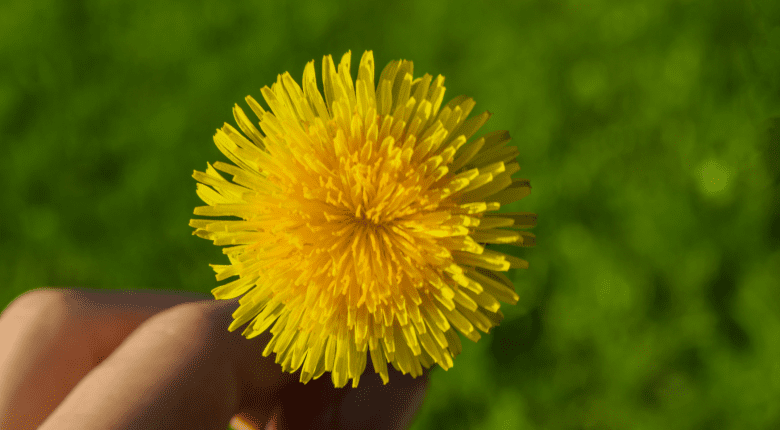
Tip 3: Expert harvesting and transportation
It is important to take scissors, a knife, a spade and gloves with you on a collection trip. Scissors and a knife allow the parts of the plant which are above ground to be harvested sparingly. The spade helps if the root is to be used. Gloves protect against thorns and stinging hairs and are therefore only necessary when harvesting certain species. A small, well-ventilated basket or paper bags are best suited as transportation containers. It’s best to place in different species separately from one another.
Please note that, in order for our wild delicacies to perform their duties in the ecosystem and to continue to grow, a moderate harvest is crucial. So, never pick all specimens of a species and generally speaking, only as many plants as will fit into a small basket. Check beforehand whether the plant is clean and healthy (i.e. not rotting, and free from fungal and parasitic infestation). Otherwise, they are not suitable for consumption and should be left.
Tip 4: Tasty preparation
Once at home, wild herbs are best used immediately for full effect. The fresher they are, the more you benefit from the high vitamin and mineral content of the wild plants. This is almost three times as high as for cultivated vegetables. Wild plants also contain valuable secondary plant substances that also benefit our health. Other species such as sweet-scented bedstraw, wood sorrel, coltsfoot and comfrey are also very healthy, but may only be consumed in moderate quantities. The reason for this is that, in addition to substances that are beneficial to health, these species also contain substances that can be harmful in excessive amounts.
The ways of preparing wild plants are extremely varied. A book of wild plants also reveals which parts can be used. Whether to enjoy raw or cooked, as the main component of the meal or as a side dish, the decision here is down to taste and personal preference. Many people actually stop short of eating raw, due to fear of fox tapeworm. Only heating provides one hundred percent certainty. However, fox tapeworm infections are very rare, and the consumption of wild herbs poses hardly any risk. However, thoroughly washing wild herbs before preparation is always recommended.
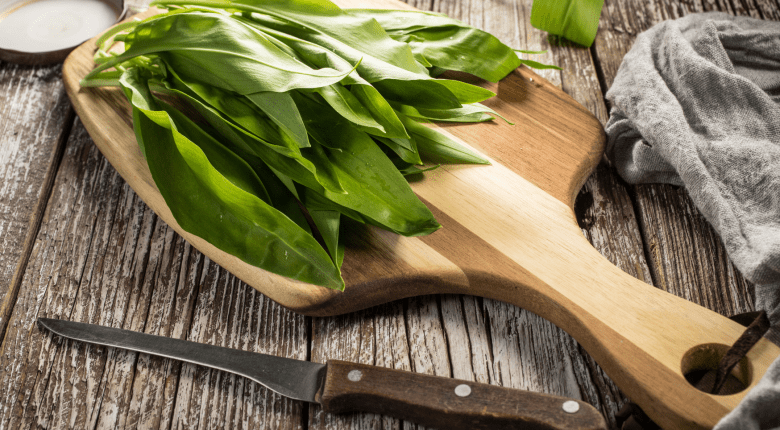
Some species need additional preparation steps. Nettles or other species with stinging hairs are only suitable for salads when blanched. The sourer varieties can be tempered if we soak them in warm water before eating and prepare them with foods to temper the flavour such as cream, crème fraîche or sour cream. The addition of apples or pears can also help to balance this. Hot plants such as wild garlic, garlic mustard or yarrow taste best if we cut them up small and mix them in as a spice.
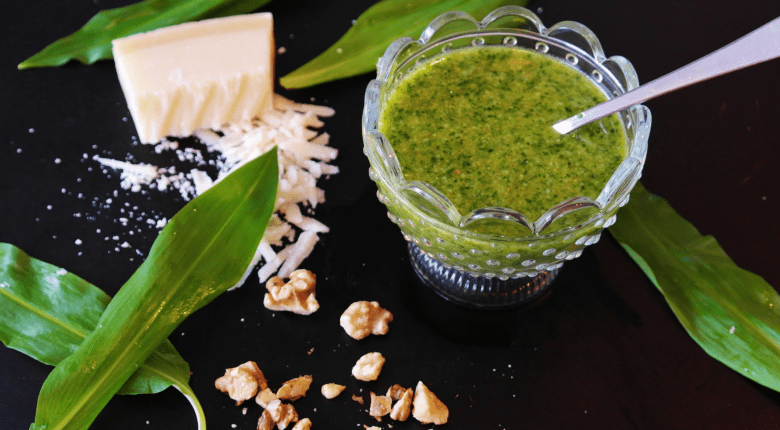
Potential recipe inspirations for using wild herbs range from mixed salads, soups, sauces, oven-baked dishes, stuffed pancakes and leaf roulades to pesto, herb quark or smoothies mixed with fruit. We can prepare or cook edible roots similar to carrots and mash them into a puree. Dandelion roots even taste great roasted and ground as a substitute for coffee powder. Edible flowers are a particularly decorative delicacy. When candied they make for a tasty and visual enhancement for every dessert.
Tip 5: Preserving
Other forms of preparation allow us to store the wild herbs a little longer. Preserving in vinegar, oil, sugar or alcohol is a method of choice. In this way, you can make products such as wild plant vinegar, oil, syrup or liqueur and preserve your plants. Alternatively, a home-made wild herb jam will certainly make an impact at Sunday breakfast. Otherwise, the herbs can also be dried and used for teas or as a dry spice. Another lively option for the flowers is freezing them in ice! Ice cubes with flowers are not just real eye-catchers, but also enhance the taste of refreshing drinks in summer.

